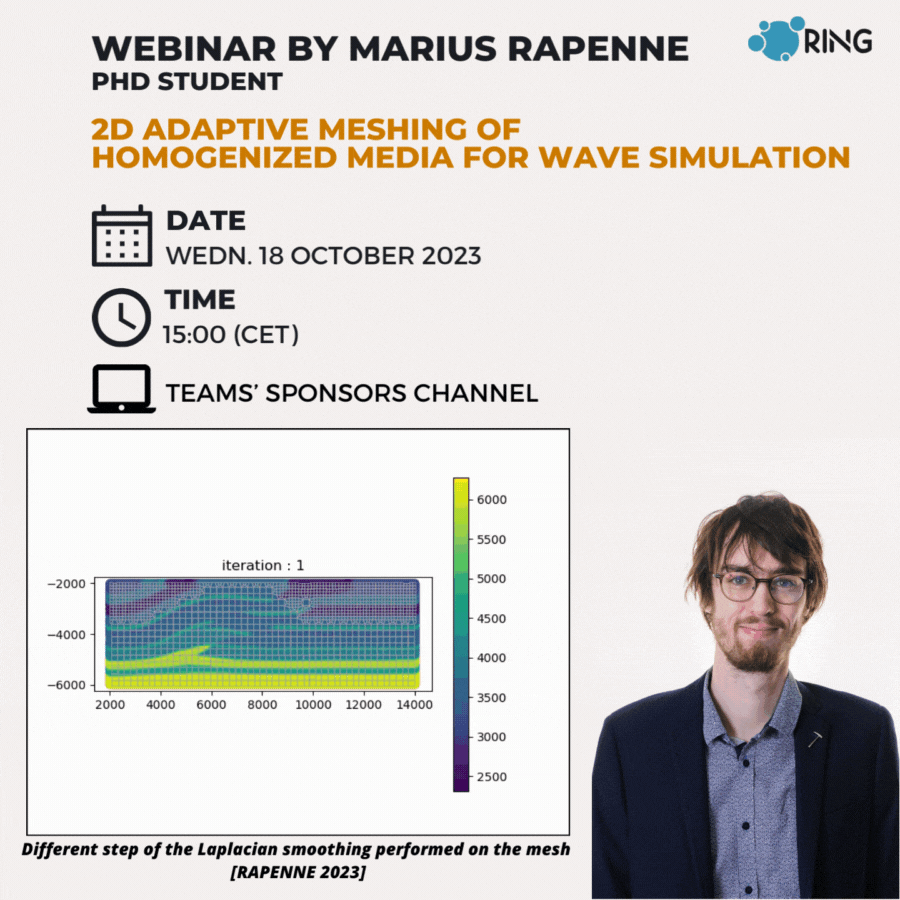Abstract
Despite continuous improvements in computational methods and facilities, numerical simulation of elastic waves still remains a challenge when taking into account fine geological features. In this context, the homogeneization method, which considerably reduces the computation cost of wave simulations, can be used. When considering these media, a way to further lighten the computational requirement consists in optimizing the mesh which supports the simulation. In this work, we present an algorithm to mesh 2D smooth media for quadrangular spectral element methods (SEM). Our meshing strategy first relies on the quadtree-based method introduced by Maréchal (2007) to adapt the size of the elements to the local minimum wavelength. During this process, we properly handle anisotropy by considering directional wavelength. Then, the second part of this work consist in using weighted Laplacian smoothing to further optimize the size of the elements to the local wavelength, which increases the global time-step and, consequently, makes SEM simulations faster. To test our method, we perform wave simulation and compared it to fine mesh that are traditionnally used with homogenized media.

